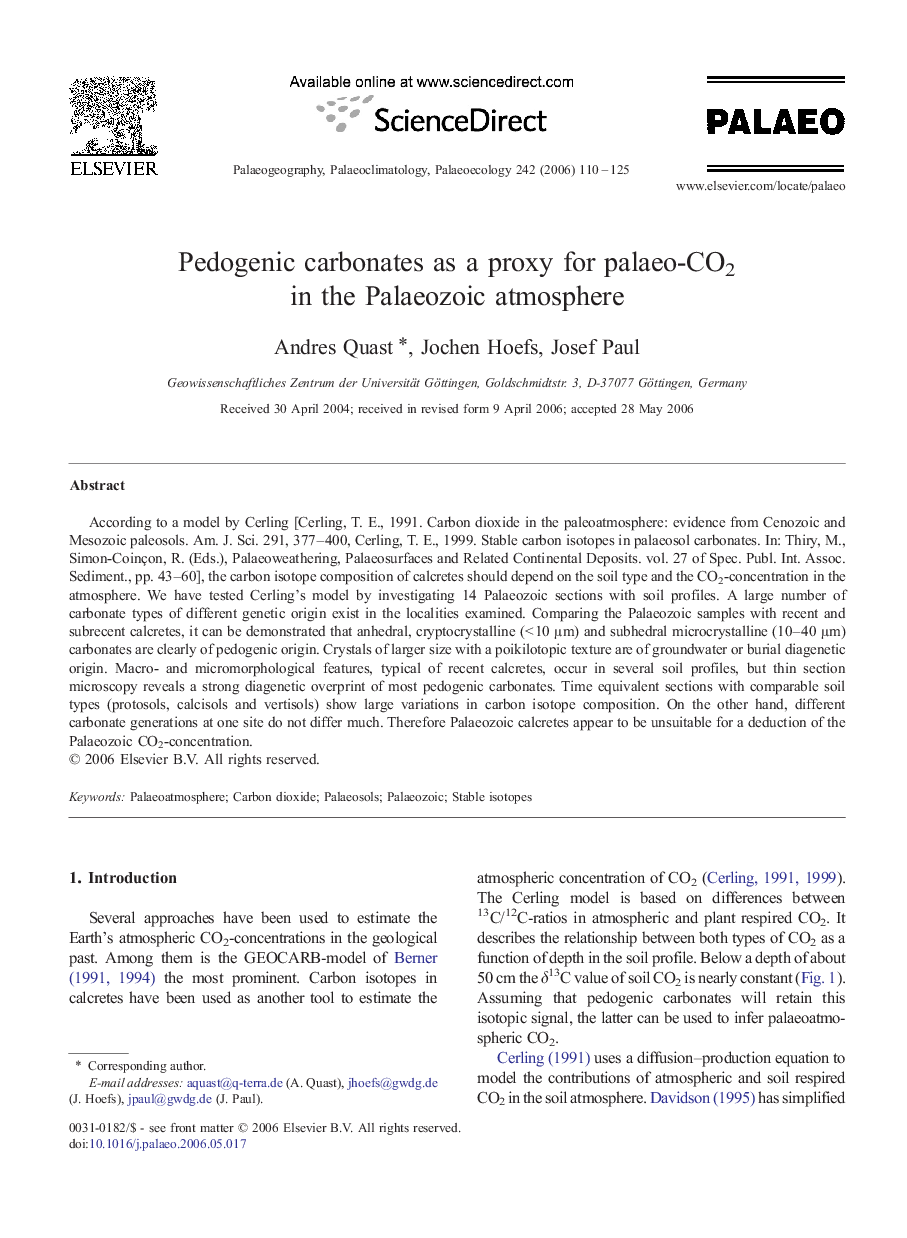| Article ID | Journal | Published Year | Pages | File Type |
|---|---|---|---|---|
| 4469126 | Palaeogeography, Palaeoclimatology, Palaeoecology | 2006 | 16 Pages |
According to a model by Cerling [Cerling, T. E., 1991. Carbon dioxide in the paleoatmosphere: evidence from Cenozoic and Mesozoic paleosols. Am. J. Sci. 291, 377–400, Cerling, T. E., 1999. Stable carbon isotopes in palaeosol carbonates. In: Thiry, M., Simon-Coinçon, R. (Eds.), Palaeoweathering, Palaeosurfaces and Related Continental Deposits. vol. 27 of Spec. Publ. Int. Assoc. Sediment., pp. 43–60], the carbon isotope composition of calcretes should depend on the soil type and the CO2-concentration in the atmosphere. We have tested Cerling's model by investigating 14 Palaeozoic sections with soil profiles. A large number of carbonate types of different genetic origin exist in the localities examined. Comparing the Palaeozoic samples with recent and subrecent calcretes, it can be demonstrated that anhedral, cryptocrystalline (< 10 μm) and subhedral microcrystalline (10–40 μm) carbonates are clearly of pedogenic origin. Crystals of larger size with a poikilotopic texture are of groundwater or burial diagenetic origin. Macro- and micromorphological features, typical of recent calcretes, occur in several soil profiles, but thin section microscopy reveals a strong diagenetic overprint of most pedogenic carbonates. Time equivalent sections with comparable soil types (protosols, calcisols and vertisols) show large variations in carbon isotope composition. On the other hand, different carbonate generations at one site do not differ much. Therefore Palaeozoic calcretes appear to be unsuitable for a deduction of the Palaeozoic CO2-concentration.
